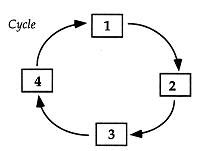From the early times, philosophers have speculated and studied about children. According to Plato, children are born with special talents and that their learning should stress those talents. Aristotle on the other hand proposed methods for observing behavior that were forerunners of modern method.
The modern era of studying children has a history that spans only a little more than a century. A number of major theories along with elegant techniques and methods of study help organize the study about children. New knowledge about children based on observation and testing is accumulating at a breathtaking pace.
In the first half of the twentieth century, a number of theories presented influential view about children. Gessel theorized that certain characteristics of children simply "bloom" with the age because of biological blueprint. To systemically observe children's behavior without interrupting them, he created a photographic dome.
Sigmund Freud's psychoanalytic theory believed that children are rarely aware of the motive and reasons of their behavior and that the rules of their mental life are unconscious. Furthermore, John Watson's behaviorism argues that children can be shaped into whatever society wishes by examining and changing their environment. Later in the twentieth century, Jean Piaget they that children pass through a series of cognitive or thought stages from infancy through adolescence. According to Piaget, children think in a qualitative different manner than adults do.
Despite the attempts to unify the various theories, the field remains dynamic, developing as human understanding of physiology and psychology changes.














